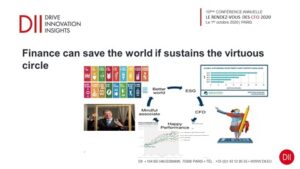Digital health: a “radical” alternative to face the new challenges

The importance of digital healthcare in the context of the PNRR and the role of the Life Sciences & Healthcare Thematic Area of Federated Innovation @MIND to encourage the development of “radical” alternatives to the needs from the multiple crises underway, according to our Ambassador Marco Venturelli.
From 7.2-7.3% in 2021 to 7% in 2022, up to just 6% in 2025: this is how the incidence of the expenditure of the Italian National Health Service on the GDP will decrease according to the Report Oasis 2022 by Cergas Bocconi. A prospect that is far from reassuring, which will add to the deterioration – already underway – in the rate of coverage of the needs of non-Covid patients, penalized by increasingly long waiting lists for both hospitalizations and outpatient activities.
To remedy these increasingly evident critical issues will be, in a significant way, the investments of over 20 billion euros envisaged by the PNRR (Piano Nazionale di Ripresa e Resilienza, or The National Recovery and Resilience Plan) over a period of approximately six years, most of which will aim at the development of digital healthcare: a sector which already today offers effective solutions to make services more accessible and inclusive for all, placing the citizen at the center of health systems.
Electronic Health Record and telemedicine at the heart of the national strategy outlined by the PNRR
A more technological and digital healthcare sector will be able to improve the process of patient care and assistance by reducing long waits, hospitalizations, optimizing overall costs and improving the provision of the services themselves thanks to a greater amount of data. Access to and availability of health data will represent a fundamental component of the digital transformation: the Fascicolo Sanitario Elettronico (Italian Electronic Health Record) will be enhanced, disseminated throughout the national territory, becoming the only access point to the clinical history of the patient by citizens, doctors, in a context of growing interoperability of the various regional systems.
In addition to the Fascicolo Sanitario, the national strategy within the PNRR aims to promote and finance the development of a national telemedicine platform and the dissemination of new projects and innovative solutions within the regional health systems. From televisits to home assistance, through monitoring via sensors and personal devices, telemedicine will allow health professionals to provide better medical assistance, even remotely, especially to chronic patients. Among the objectives of the PNRR, telemedicine will assist over 200,000 patients by 2025.
The 2022 of the Life Sciences & Healthcare topic area of Federated Innovation @MIND
In this context, it is no coincidence that 2022 was an extraordinary year for the activities of the Life Sciences & Healthcare Thematic Area of Federated Innovation @MIND, with projects carried out, ideas and actions agreed and implemented, strategies and perspectives increasingly shared. As Venklat Atluri and Miklos Dietz write in the essay “The Ecosystem Economy”, “as the barriers between sectors and disciplines break down, organizations will have to reshape the way they think about value propositions, competition, partnerships, organizational and operational models and performance management“.
The latter trend has already been embraced by companies that have chosen to join the Federated Innovation network. By way of example, it is useful here to recall a couple of the initiatives carried out jointly by the companies of the Life Sciences & Healthcare Thematic Area and which concern precisely the development of data management techniques and remote health care:
– the FEMUR Project, where two members of the Thematic Area collaborate with the IRCCS Galeazzi Sant’Ambrogio to study, define and propose new protocols and treatment paths for citizens and patients, integrating the technologies available today and experimenting with home treatments integrated with future territorial structure of the health envisaged by the PNRR, starting from a case study dedicated to patients who were victims of a hip fracture
– the participation of four members of the Life Sciences & Healthcare thematic area in the ecosystem of Regione Lombardia, where the PNRR has envisaged the development of an innovative digital platform for the conservation of big data relating to life sciences, to be made usable by systems of artificial intelligence to ensure the well-being of the population
The added value of Federated Innovation’s “Collaborate to Compete” model
We will certainly remember these and other projects launched from 2022, but the most important result will remain the creation of a group that has shared the Federated Innovation Manifesto and applied its indications in order to “collaborate to compete“. The last few years, having lived with the pandemic, have in fact led to the birth of new models of collaboration between companies, since it was in everyone’s interest to find spaces for discussion to resist and prepare to restart: in the approach to society’s needs in terms of health, Federated Innovation’s “Collaborate to Compete” model represents an added value at a time when connection, collaboration, and sharing constitute “radical” alternatives to face the multiple crises underway.





